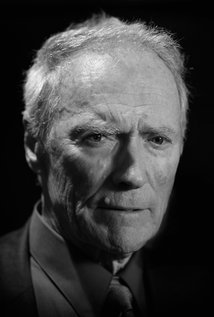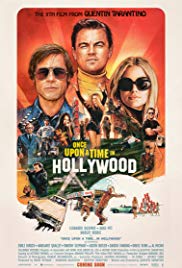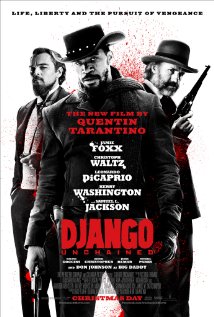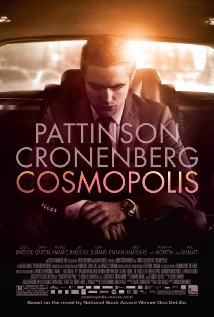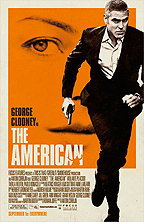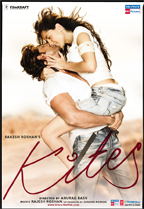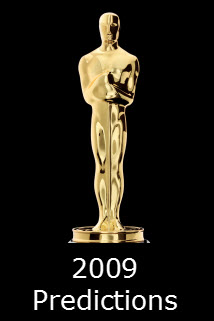Inglourious Basterds (2009)


Content by Tony Macklin. Originally published on August 19, 2009 @ tonymacklin.net.
"Vengeance is mine," sayeth the gospel according to Quentin.
In his new film Inglourious Basterds, writer/director Quentin Tarantino creates a witches' brew of vengeance, curdled history, and pulpy ego.
It's a mixture that some will think is a masterpiece; others will think it an audacious hodgepodge. I think I'm among the latter.
Tarantino knows that film can reverse history and massage psyches. He himself has ridden it from the shadows of a video store to the shimmering heights of filmmaking.
In his therapeutic session -- Inglourious Basterds -- it's the Jews that mark Nazis, it's the Jews who are ruthless, and it's the German high command that is immolated along with their followers. Inglourious Basterds posits a revisionist history that changes the powerless into the powerful, and vice versa.
Film sets fire to film.
Tarantino's target audience still harbors demons. They may be uplifted by the musculature of vengeance -- more than 65 years after the fact.
Beautiful, young Jewish actress Melanie Laurent portrays Shoshanna Dreyfus, who escaped as a young girl when the Nazis murdered her family. She grows up to become a movie theater owner, who exacts her revenge in her movie theater. Get it?
Laurent said she was grateful to portray "the face of Jewish vengeance...... it was for my family." Her own relatives -- as her grandfather had told her -- had been victimized by the Nazis.
Inglourious Basterds (ah, the spellings of different nationalities) is the story of a group of renegade Nazi-killers that goes into occupied France during the 2nd World War.
They are given fearsome names by the Nazis -- e.g., Aldo the Apache (Brad Pitt), who uses scalping as his calling card of choice, or the Bear Jew, who smashes Nazis to death with a baseball bat.
Aldo is the dirty doyen.
Inglourious Basterds has few of Quentin Tarantino's signature scenes. Probably the most Tarantinoesque is a lengthy sequence in a cellar tavern in France, where three allies meet a German actress to plot an attack. But celebrating German soldiers unpredictably are present, as is a SS officer, so matters are complicated.
The scene's dialogue, especially about language, has some of the Tarantino facility, but the scene drags on too long. Many of the scenes lumber and sprawl, which makes the movie especially disjointed.
Tarantino has called Inglourious Basterds "a war film and a love letter to cinema." He has divided it into five chapters, the best of which is the opening, beautifully photographed by Robert Richardson. The sequence strongly alludes to Sergio Leone's Once Upon a Time in the West (Ennio Morricone's music can't miss).
In the chilling opening, a Nazi colonel enters a farmhouse, hunting hidden Jews. He has a friendly conversation with the farmer, who has three daughters -- the scene is taut and suspenseful.
Tarantino's best stroke of fortune was to find veteran tv and stage Austrian actor Christopher Waltz to portray the Nazi colonel Hans Landa. He embodies amiable dread, sinister civility. Landa is a smiling, poisonous spider.
Waltz carries the film. He won the Best Actor award at the Cannes Film Festival for his indelible performance.
Brad Pitt, with jutting jaw and cornpone Tennessee accent, is the intrepid leader of the Basterds. Tarantino visits his storehouse of shallow cleverness by naming Pitt's character Aldo Raines -- an allusion to actor Aldo Ray, who was a solid actor in such films as Battle Cry (1955) and The Naked and the Dead (1958). Ray was thrown out of SAG because later he did non-union work, which may appeal to Tarantino.
The film is full of look-at-me-I'm-so-clever allusions to friends, colleagues, and movie trivia, but they're often fallow. Some of the movies Tarantino alludes to are The Big Red One, The Dirty Dozen, The Guns of Navarone, To Be or Not to Be, Sergeant York, and a bevy of others.
He also makes reference to Van Johnson, Emil Jannings, Leni Riefenstahl, Marlene Dietrich, et al. Perhaps the German actress Bridget von Hammersmark (Diane Kruger) is reminiscent of Hildegard Knef (who was Neff in America -- more language difference).
Tarantino also uses Samuel L. Jackson as narrator, Rod Taylor has a cameo as Churchill, and Mike Myers -- in make-up and prosthetics -- is a British general.
The climax of Inglourious Basterds comes at Shoshanna's movie theater, where there is the premiere of a Joseph Goebbels' produced movie Nation's Pride (footage actually directed by Eli Roth), which is about a German hero, a sniper played by Fredrick Zoller (Daniel Bruhl), who was the sniper. Bo Swenson who was in the original 1978 movie from which Tarantino took his title for Inglourious Basterds is in the footage of Nation's Pride.
As usual Tarantino has a gift for potently utilizing music. His use of David Bowie's compelling Cat People ("And I'm putting out fire with gasoline") as a character prepares for arson is brilliant.
But, as usual, Tarantino's unbridled vanity is in vivid evidence in Inglourious Basterds. Maybe his tongue is swollen in cheek.
He has Aldo Raines deliver the film's last pregnant line, "I think this just might be my masterpiece."
Oh, Quentin, shut up.
Pulp Fiction is your "masterpiece."
Enough trying to revise history.
